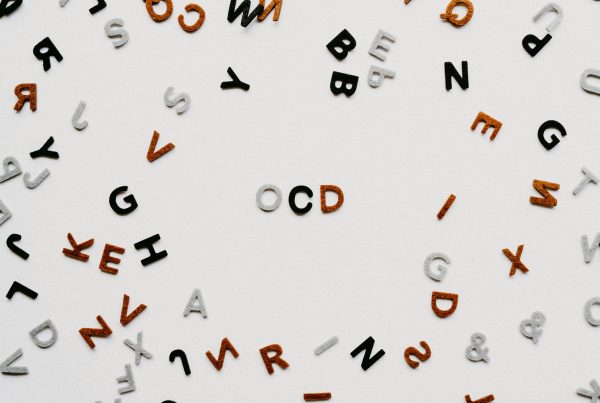The contrast between panic attacks and anxiety attacks is incredibly nuanced, and in most cases, negligible. To begin, what defines an anxiety attack is subjective because the term anxiety attack is not mentioned – much less, outlined – in the DSM-5. On the other hand, the term panic attack is recognized and described in the DSM-5 as a diagnostic criteria of Panic Disorder, a type of anxiety disorder. Over 36 million (~11%) Americans experience panic attacks each year, and about 2-3% of those go on to develop panic disorder. Panic attacks affect individuals of all ages and genders, but some populations have an increased risk of experiencing panic attacks. They typically first occur in teenage or young adult years, and women (3.8%) are more than twice as likely than men (1.6%) to develop panic disorder. Finally, an estimated 4.7% – about 155 million – Americans will experience panic disorder at some point in their lives. As described later, panic disorder is characterized by experiencing recurrent and persistent panic attacks, meaning the estimated number of Americans who will experience panic attacks – just not to the degree diagnosis requires – is likely much higher than 155 million.
What is an anxiety attack?
For all intents and purposes, the terms anxiety attack and panic attack can be used interchangeably to describe the same event. Anxiety attacks are not formally recognized by the DSM-5, but if we think about anxiety attacks as experiencing an overwhelming amount of anxiety at a particular moment, we can see how an apt description of the event would be a panic attack. Therefore, a more straight-forward distinction can perhaps be made between experiencing anxiety and having a full-blown panic attack/anxiety attack. Anxiety is a symptom of panic attacks, but is different from the attack itself.
Anxiety is characterized by incessant worry and fear of certain situations, spaces, etc., and typically has a more anticipatory nature than panic itself. Anxiety can persist at varying levels for long periods of time (days, weeks, etc.) and may persistently interfere with an individual’s daily activities and responsibilities. One of the simplest distinctions between anxiety and a panic attack is that anxiety is typically caused by an easily-identifiable trigger, such as crowded spaces, an upcoming presentation, or a health issue. Although anxiety can have emotional and physical symptoms, it is generally regarded as less severe than panic attacks. While those feeling physical symptoms of anxiety will experience discomfort, the compounding effects often cause those experiencing a panic attack to believe they could actually die from their symptoms. Common symptoms of anxiety include:
- Feeling nervous, restless, or tense
- A sense of impending danger
- Increased heart rate
- Rapid breathing
- Increased sweating
- Trembling
- Feeling weak or tired
- Trouble concentrating or thinking about anything aside from the worry or fear
- Sleeping difficulties
- Gastrointestinal problems
- Difficulty or inability to control your worry
- Acting on the urge to stay away from situations, spaces, etc. that could cause discomfort
As previously mentioned, anxiety is typically triggered by an identifiable stressor and/or is accentuated by past experiences. Common stressors that cause or increase one’s risk of experiencing anxiety are:
- Medical problems: Several illnesses, such as heart disease, diabetes, hypo- or hyperthyroidism, respiratory disorders, and chronic pain, are all linked to anxiety.
- Trauma: People who experienced violence/abuse as adolescents have a significantly higher risk of developing a diagnosable anxiety disorder. Additionally, people who experience trauma in adulthood can be affected by the experience for several years after, such as with post-traumatic stress disorder (PTSD)
- Upcoming events or activities: The pressure to perform is a common cause of anxiety, which may occur in the face of things like an upcoming exam, game, or presentation. This pressure to perform may extend to social situations as well.
What is a panic attack?
The APA Dictionary of Psychology defines a panic attack as, “a sudden onset of intense apprehension and fearfulness in the absence of actual danger, accompanied by the presence of such physical symptoms as heart palpitations, difficulty breathing, chest pain or discomfort, choking or smothering sensations, sweating, and dizziness.” It also notes that panic attacks occur in discrete periods of time and often involve fears of going insane, losing control, or dying. Panic attacks can further be described as recurrent (cued) or unexpected (uncued). Recurrent (cued) panic attacks occur almost invariably upon exposure to a specific situation trigger. Unexpected (uncued) panic attacks occur spontaneously and without a specific situational trigger.
In terms of diagnosis, panic attacks are most associated with panic disorder. Panic disorder is a type of anxiety disorder characterized by unexpected, repeated panic attacks that are associated with (a) persistent concerns of having another attack, (b) worry about the possible consequences of having another attack, and/or (c) significant change in behavior related to the attacks. Further diagnostic criteria of panic disorder include:
- > 1 attack has been followed by 1 month or more of 1 or both of the following
- Persistent concern about additional attacks or their consequences
- A significant maladaptive change in behavior related to the attacks
- The panic attacks are not due to the direct physiological effects of a substance or general medical condition
- The panic attacks are not better accounted for by another mental disorder
Aside from panic disorder itself, panic attacks tend to occur most often in the context of the other DSM-5-classified anxiety disorders, as well as in mood disorders and substance-related disorders.
While anxiety can last long periods of time since there tends to be a gradual build up of worry then continuation, the onset and duration of panic attacks tends to be relatively short. The DSM-5 describes a panic attack as an abrupt surge of intense fear or intense discomfort that reaches peak within minutes and during which time four or more of the following symptoms occur:
- Palpitations, pounding heart, or accelerated heart rate
- Sweating
- Trembling or shaking
- Sensations of shortness of breath or smothering
- Feeling of choking
- Chest pain or discomfort
- Nausea or abdominal distress
- Feeling dizzy, unsteady, lightheaded, or faint
- Derealization (feelings of unreality) or depersonalization (being detached from oneself)
- Fear of losing control or “going crazy”
- Fear of dying
- Paresthesias (numbness or tingling sensation)
- Heat sensations (i.e. chills or hot flashes)
Heart attack vs. panic attack
After reviewing the symptoms of a panic attack, you may have noticed they resemble the physical signs of a heart attack. For this reason, it is not uncommon for individuals experiencing a panic attack to believe they are having a heart attack and that their life is in danger. Despite the similarities in the way they present themselves, heart attacks and panic attacks result from very different physiological processes. Heart attacks result from a lack of blood flow – and therefore, oxygen – reaching the heart, while panic attacks arise when stress hormones activate the body’s stress response (“fight or flight”). Therefore, one of the first characteristics that could be used to distinguish the two conditions is that heart attacks are more likely to develop during physical exertion, when the heart’s workload increases, whereas a panic attack can occur at rest. Another key difference is duration. The onset and duration of panic attacks tends to be under 30 minutes, while heart attacks will often continue and may worsen over time. Lastly, a common sign of a heart attack that is not present in panic attacks is pain that radiates to the left arm, jaw, or shoulder blades. Of course, these distinctions are not always present and may be difficult to recognize under pressure. If there are any questions, you should always seek immediate medical attention.
How to calm down from a panic attack
Keeping a focused mind that is capable of self-soothing techniques is not easy during a panic attack. However, doing your best to practice even just one technique during a panic attack could significantly aid you in regaining control of your body’s stress response.
- Recognize and accept what you are experiencing. Panic attacks are often worsened by catastrophizing one’s physical symptoms. If you react to the characteristic increased heart rate, breathing rate, muscle tension, etc. of a panic track, the sensations will often feel worse. It is in your best interest to recognize your symptoms for what they are – uncomfortable, but not harmful.
- Remind yourself that your panic is temporary. For some, learning about the bodily mechanisms that take place during a panic attack help minimize the perceived severity of their panic attacks. Most notably, the average panic attack begins and ends within 30 minutes, so reminding yourself of a quickly-approaching stop to your symptoms could help keep your situation in perspective.
- Focus on controlling your breathing. Try the 4-7-8 breathing technique, which was developed by Dr. Andre Weil.
- Start by exhaling completely through your mouth
- Close your mouth and inhale through your nose for 4 seconds
- Hold your breath for 7 seconds
- Slowly exhale through your mouth for 8 seconds
- Continue the cycle until your breathing is more controlled
- Consciously relax your muscles. This may be accomplished through a technique called Progressive Muscle Relaxation (PMR). It involves tensing and releasing all major muscle groups, starting from your toes then working up the body. This may seem counterintuitive since panic attacks typically cause increased muscle tension, but the theory is that when tense muscles are further tightened, they release into a calmer/looser state than they were originally.







